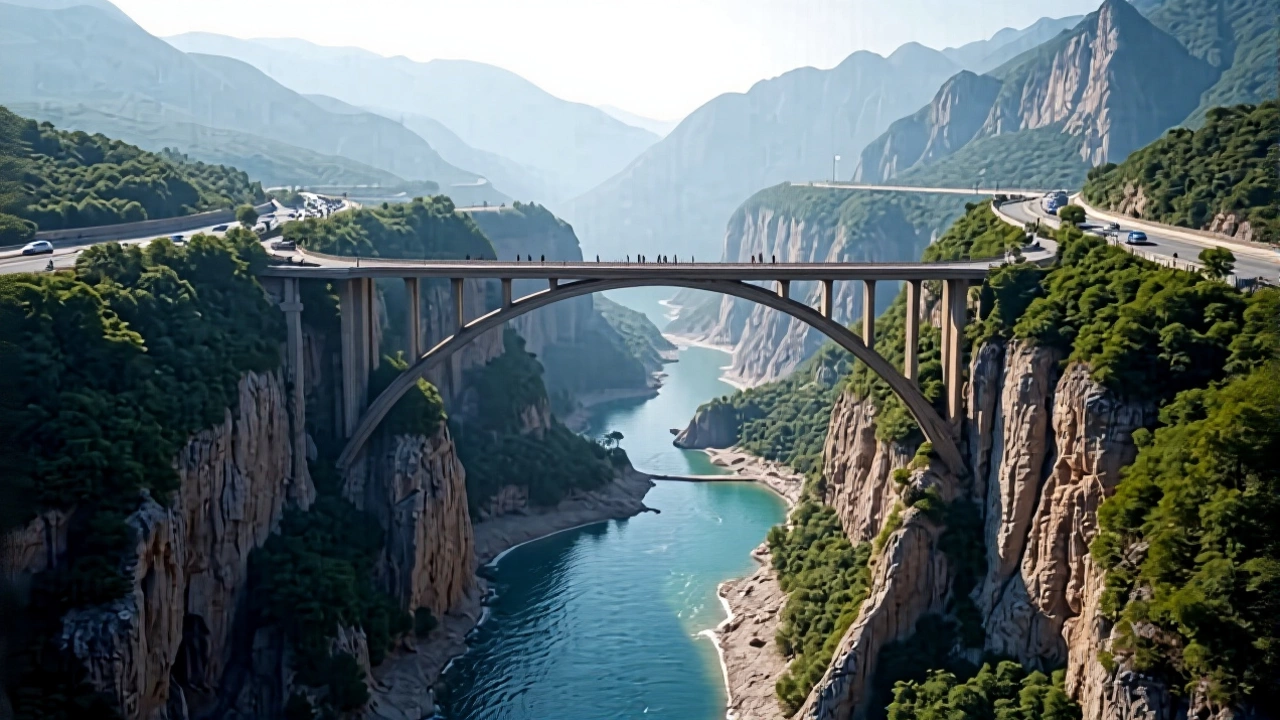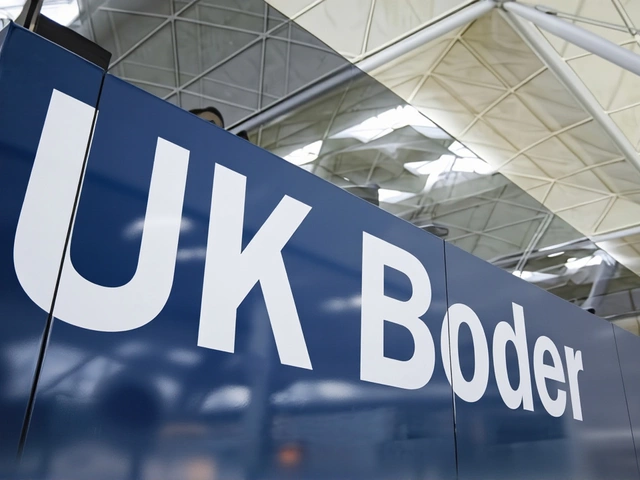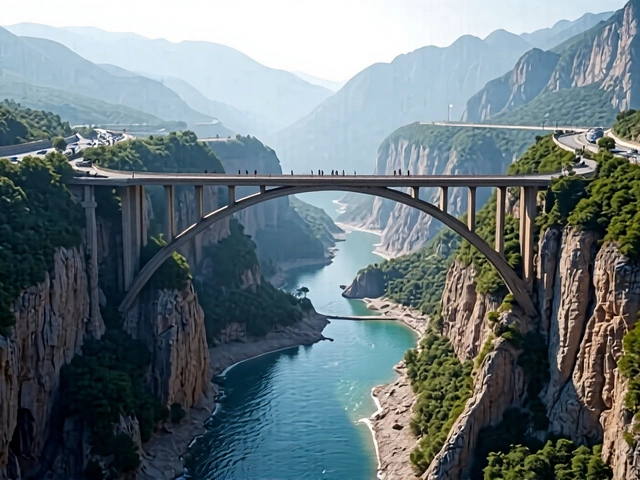The Huajiang Grand Canyon Bridge in Zhenfeng County, Guizhou Province, China, opened to traffic on January 12, 2025, instantly claiming the title of the world's tallest bridge. Suspended 625 metres above the Beipan River, the structure stretches 2,890 metres in total, with a main span of 1,420 metres – longer than the UK’s legendary Humber Bridge.
Why the Bridge Matters
For locals, the new crossing slashes a two‑hour ferry ride into a two‑minute drive. That’s not just a convenience; it’s a lifeline for schools, hospitals and markets that were once isolated by the canyon’s sheer walls. A spokesperson for the Guizhou Provincial Government told reporters, “We’ve turned a natural barrier into a bridge to opportunity.”
The economic ripple is already showing. Early traffic counts suggest a 40 % increase in vehicle flow on the Guizhou S57, Liuzhi‑Anlong Expressway, the highway that the bridge carries. Analysts estimate that the reduced travel time could add roughly ¥3.2 billion (about $460 million) to regional GDP each year.
Engineering Feats and Design
Designers chose a stiffened steel‑truss deck that runs the full 8‑metre depth of the bridge, a tweak from the original 7.5‑metre plan. The extra metre wasn’t a cosmetic decision; it gives the deck the rigidity needed to resist the fierce canyon winds that can gust over 180 km/h.
Two towers anchor the span. The north tower, perched on a steep slope, rises 262 metres, while the south tower stands 205 metres tall on a gentler bank. Both towers echo Art‑Deco motifs – layered setbacks that feel like a nod to San Francisco’s Golden Gate Bridge, yet remain unmistakably Chinese in their precision.
Here’s the thing: building at such altitude demands more than just big cranes. The project’s engineers relied on a pair of Alimak SC 65/32 construction hoists. Each hoist can lift 2,000 kg, travels at up to 60 m/min, and climbs a vertical distance of 190.5 metres. The machines proved their worth previously on the 310‑metre‑high Guizhou Yunwu Bridge, so the decision felt natural.
Construction Challenges and Alimak’s Role
Unlike a simple river crossing, the Huajiang site sits at the junction of the Yunnan Plateau and the Lower Yangtze Valley Plain. That position creates a mash‑up of cold and hot air masses, leading to rapid temperature swings that can expand and contract steel by millimetres in a day.
To keep the work on schedule, crews erected temporary cable‑supported platforms that floated between the canyon walls. The Alimak hoists were mounted on these platforms, shuttling workers, concrete pumps and pre‑fabricated truss sections up and down the sheer faces.
“The hoists behaved like elevators in a skyscraper,” said chief engineer Liu Wei. “Their smooth rack‑and‑pinion action let us place a 1.8‑tonne girdle segment with a precision you’d expect only in a clean‑room.”
Construction began in March 2021, the main cables were strung by October 2023, and the deck was fully closed out by December 2024. When the final panel was lowered, the entire structure stood ready for the ceremonial opening.
Economic and Tourism Impact
Beyond the traffic shortcut, the bridge is being marketed as a tourist magnet. The county plans a café at the midpoint, a geological museum showcasing the canyon’s formation, and a bungee‑jumping centre that promises a free‑fall from 620 metres – a thrill that would rival any Swiss Alps jump.
Officials project more than one million visitors in the first year. That would translate to an additional ¥1.1 billion (about $160 million) in tourism revenue, according to a study by the China Tourism Academy. Local hotels are already booking rooms months in advance.
Oddly enough, the bridge’s design includes observation decks on both towers, giving hikers a chance to look down the 2‑kilometer‑long canyon – a view that many say will become a new Instagram hotspot.
Future Outlook and Regional Significance
Guizhou Province now hosts three of the world’s eighteen tallest bridges, and almost half of the top 100 highest bridges worldwide. The Huajiang Grand Canyon Bridge adds a new superlative to that list, cementing the province’s reputation as a bridge‑building powerhouse.
The structure also serves as a test‑bed for high‑altitude construction techniques that could be exported to other rugged regions, from the Himalayas to the Andes. If the bridge’s expected traffic surge holds, it could spur a wave of similar projects aimed at knitting together China’s remote hinterlands.
What’s next? The provincial transport bureau is already eyeing a parallel rail line that would run beneath the bridge’s deck, potentially linking Zhenfeng with the high‑speed network that threads through western China. If that materialises, the canyon could become a multimodal corridor, moving people and goods faster than ever before.
Key Facts
- Height above water: 625 metres – the tallest bridge in the world.
- Total length: 2,890 metres; main span: 1,420 metres.
- Tower heights: north 262 m, south 205 m.
- Travel time cut from 2 hours to 2 minutes.
- Projected annual visitors: >1 million.
- Construction period: March 2021 – December 2024.
Frequently Asked Questions
How does the bridge affect daily commuters in Guizhou?
Commuters now travel between Liuzhi and Anlong in two minutes instead of two hours. The reduction cuts fuel costs, lessens wear on vehicles, and provides reliable access to schools and hospitals that were previously reachable only by ferry.
What engineering challenges did the canyon present?
The canyon’s steep gradients, extreme wind gusts and rapid temperature swings required a stiffened steel‑truss deck and specially designed Alimak hoists. Builders also had to erect temporary cable platforms to move materials across a 2‑kilometre span with no existing road.
Why is the bridge expected to boost tourism?
With a café, geological museum, observation decks and a bungee‑jumping centre, the bridge offers a one‑stop attraction. Its dramatic height and Art‑Deco towers provide photo‑worthy backdrops, and officials estimate more than one million visitors will come in the first year.
What role did Alimak play in the construction?
Alimak supplied two SC 65/32 single‑cage hoists, each capable of lifting 2 tonnes at up to 60 m/min. The hoists facilitated the placement of heavy truss sections and concrete pumps high on the canyon walls, keeping the project on schedule.
How does this bridge compare to other world‑record bridges?
While the Humber Bridge in the UK held the longest suspension span record for 17 years, the Huajiang Bridge boasts the greatest deck‑to‑water height at 625 metres. It also surpasses the 600‑metre‑high Millau Viaduct in France in sheer vertical clearance.






